Forever associated with Joan of Arc, the French hero of the Hundred Years War, Orléans is one of France’s most historic cities.
The story of how the 19-year old peasant girl, inspired by religious visions, lifted the siege of the city in 1429, only to be captured and burnt at the stake by the English, is felt wherever you go in Orléans. The modern city celebrates her life and has a wealth of other attractions and places to visit.
Where is Orléans?
The city of Orléans is on the banks of the Loire, about 75 miles southwest of Paris in the Centre Val de Loire region. The splendid châteaux, villages and vineyards of the Loire Valley are on its doorstep.
Driving to Orléans from Calais
Orléans is around a 5 hour drive (with tolls) from Le Shuttle's Calais Terminal. Travelling on the quickest A16 route will take you through the outskirts of Paris. You will pass Versailles, so why not break the journey and take in surely the greatest royal palace in France?
A city packed with culture
Whether you’re a lover of art, history or French architecture, the list of cultural things to do in Orléans is as long as the city’s central thoroughfare, the Rue Jeanne d’Arc. Handily many of them are on or close to this main street. A tram system makes getting about easy, and much of the city centre is pedestrianised.
Orléans Cathedral
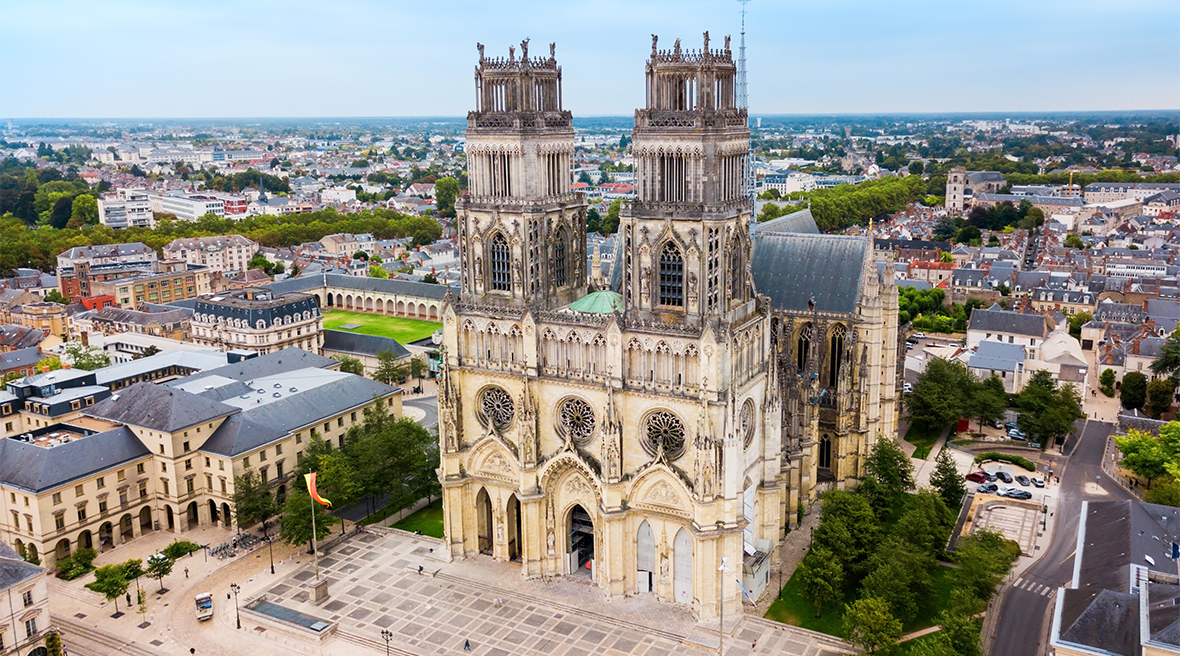
Orléans cathedral, where Joan’s life is depicted in the stained glass windows
Built between the years 1278 to 1329 and 1601 to 1829, the Cathedrale Sainte-Croix d’Orléans dominates the city centre. Joan went to mass here, and its stained-glass windows depict her story. Much of the building itself is from the later period, as the cathedral was partly destroyed during the French Wars of Religion in the 16th century.
If you’re travelling with children, the cathedral is a great place to teach them a little about this iconic part of French history. There are guided tours of Orléans cathedral which include the treasury with its Byzantine enamels.
Musée des Beaux-Arts
Opposite Orléans cathedral is the Musée des Beaux-Arts, one of the oldest provincial museums in France, founded in 1797. It houses works by Velazquez, van Dyck, Delacroix, Gaugin, Picasso and Rodin, and ranges widely over Western art from the 15th to the 20th century.
The museum’s collection includes 2,000 paintings, 700 works of sculpture, over 1,200 pieces of decorative art, 10,000 drawings, 50,000 prints and the second largest collection of pastels in France (after the Louvre).
Place du Martroi
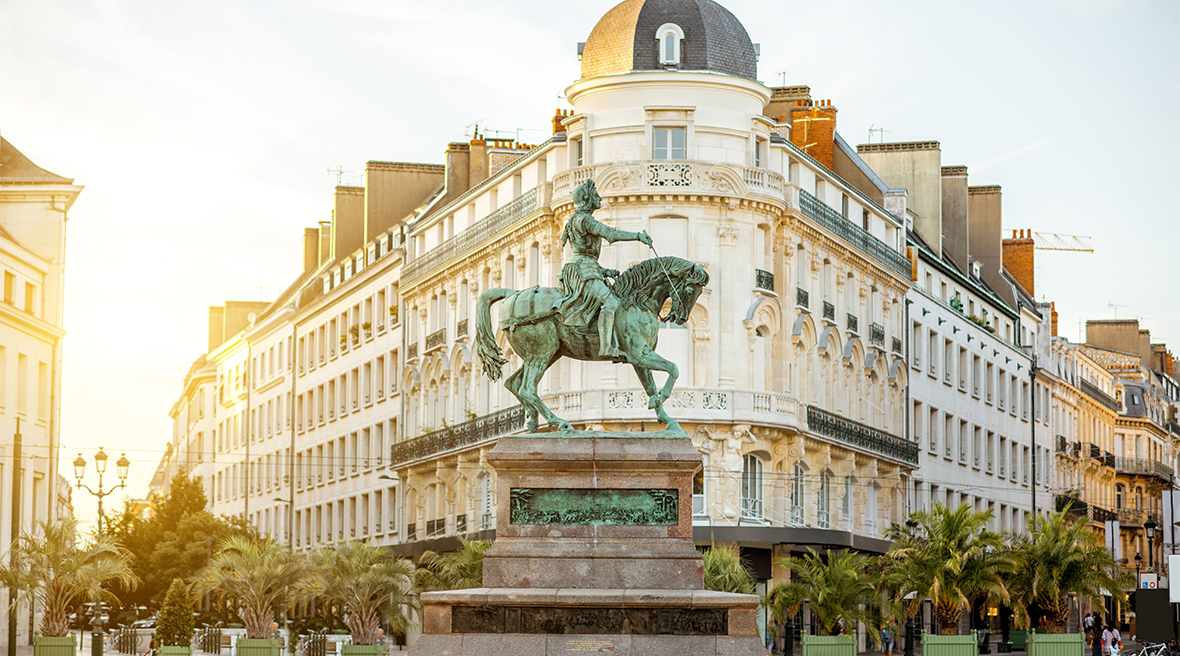
The bronze statue of Joan of Arc, Martroi Square
Place du Martroi (Square of the Martyr) is the main city square. A bronze equestrian statue of Joan stands in the middle of the square, which is completely pedestrianised. Lined by cafes and restaurants, the square is the place for fun fairs, markets and other events through the year, as well as the focal point for the annual Joan of Arc festival.
Maison de Jeanne d'Arc
This half-timbered house just off the Rue Jeanne d’Arc is the site of a building where Joan stayed after she entered the city. It was bombed during World War II and rebuilt in the 1960s. Today it houses a museum dedicated to the saint and martyr’s life.
The museum includes a multimedia exhibition, and a small screening room where visitors can watch a short film about the life of the Maid of Orléans. The upper floors house a vast collection of material related to Joan, including books, magazines, slides, art and film. Access to the collection is by appointment only, but the museum is open to the public every day except Mondays.
Hôtel Groslot
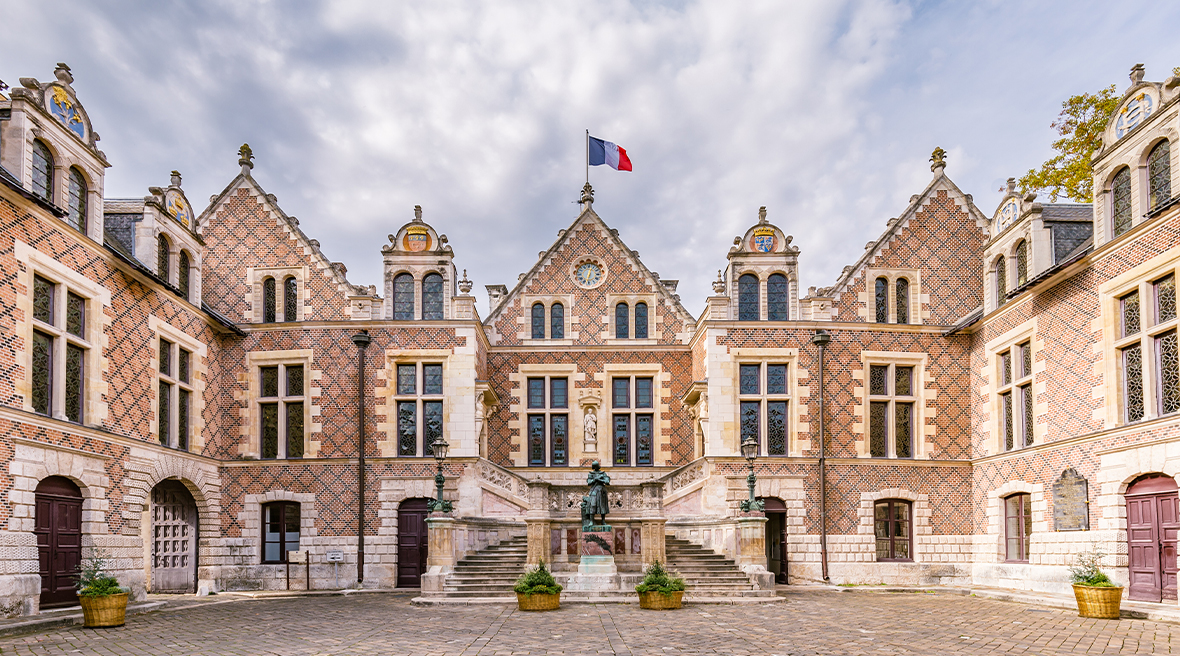
The Hôtel Groslot, Orléans
Just around the corner from the cathedral is the Hôtel Groslot, an original hotel from the Renaissance period built by Jacques Groslot, a 16th-century royal adviser. The building was lavishly decorated and furnished, with painted canvas walls, moulded panelling, Aubusson tapestries and coffered ceilings.
It was built for royalty, and they came, but not without tragedy. The young French king Francis II died here in 1560, aged just 16. Entry to the Hôtel Groslot is free for visitors today, and the building is open every day all year round.
Collégiale Saint-Aignan
A short walk from the banks of the Loire river is one of the oldest churches in Orléans, the collegiate church of Saint-Aignan. Built between the 11th and 12th centuries, it is in the Romanesque style and is dedicated to Anianus, a 5th-century bishop of Orléans who according to legend persuaded Attila the Hun not to sack the city.
The crypt is particularly interesting and atmospheric, and features frescoes from the 12th century including perfectly preserved images of a Christ of Majesty, the Virgin Mary, St Anne and St John the Baptist.
More to explore
There is so much more to discover in Orléans, including family-friendly attractions and an adventure park in the heart of the city.
Parc Floral de la Source
On the outskirts of the city you will find not only the University of Orléans, one of the ancient French seats of learning, but the Parc Floral de la Source. These botanical gardens feature themed gardens full of colour that change with the seasons, as well as a butterfly house, farm animals and mini-golf to keep everyone entertained. It also marks the source of the Loiret River, a tributary of the Loire.
It’s the perfect place for a picnic or simply to take a stroll to enjoy the park’s natural beauty, which benefits from its location between the Loire Valley and the wooded areas of the Sologne region.
Discover the historic centre of Orléans
While much of the city has been rebuilt since the Second World War, some of its oldest streets and buildings remain. If the cobbles and half-timbered houses were not enchanting enough, there are small gold discs around the old town, so the history lover can follow Joan’s footsteps around the city.
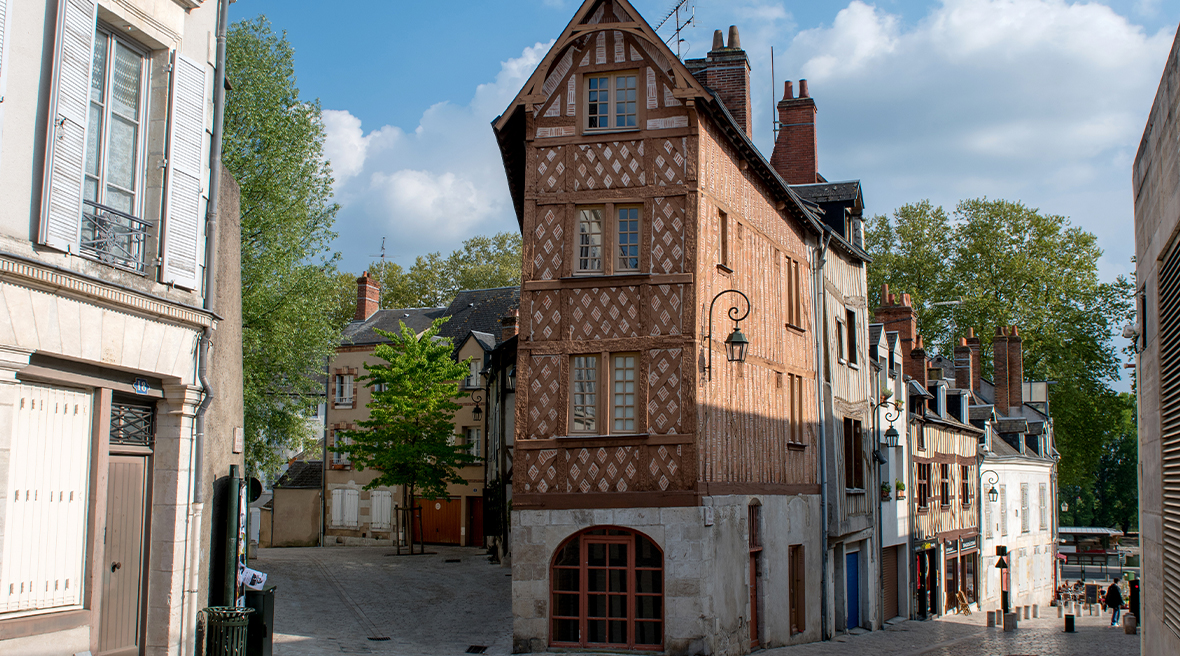
Some charming cobbled streets and half-timbered houses of the old town remain
Relax and unwind at Île Charlemagne
If you need a break from history and culture, head for Charlemagne Island on the southern banks of the Loire river. This huge pleasure and adventure park features a lake, beach, childrens’ playground and fields for sports including basketball, handball and beach volleyball.
Taster sessions for triathlon, windsurfing and kayaking are available. Whether you want to swim, cycle, jog or just take it easy on the beach, the choice is yours on Île Charlemagne.
Fêtes Johanniques d’Orléans
Orléans has paid tribute to its saviour every year since 1432. The Joan of Arc festival takes place over ten days between late April and early May, and is a good time to be in the city, with cathedral services, concerts, firework displays, battle re-enactments and a market of medieval arts and crafts.
The parade is one of the highlights, and sees a young woman in medieval armour take the role of the Maid of Orléans. She rides at the head of a procession past the major landmarks of the city, crossing the Loire river, followed by her small army on horseback wearing the military costumes of the day.
Discover the local delicacies
The Loire valley is known for its regional produce, and the Central Loire region abounds with delicious cheeses and wines like Sancerre, Vouvray and Chinon. In Orléans grape connoisseurs can taste the finest local wines at the city’s wine bars and cellars like Les Becs a Vin. The city boasts an array of fine restaurants, including the Michelin Star Le Lièvre Gourmand, and the more down to earth Oh Terroir, which sources all its food from local farms.
Start your Orléans journey with LeShuttle
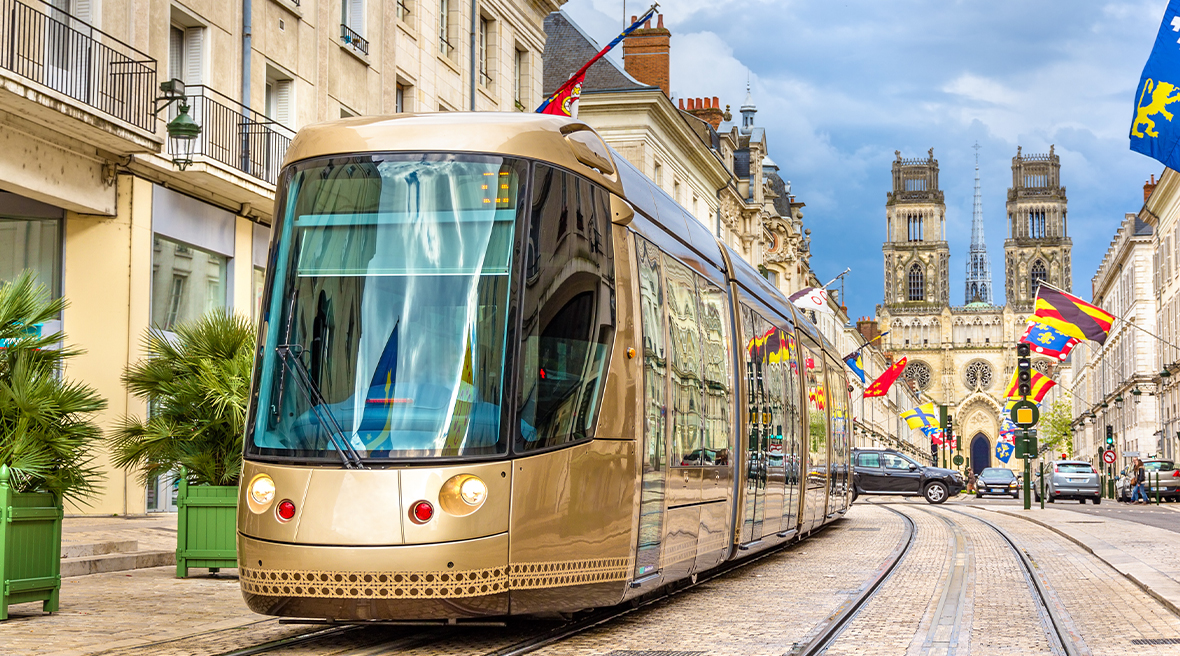
The Orléans tram system is a convenient way to get across the city
Orléans was once one of the most important cities in France, and deserves to be rediscovered. There are plenty of attractions within the city or places to visit in the Loire Valley, where you can explore the castles and vineyards by car, on foot or by bike.
Remember, France is just 35 minutes away from Folkestone via LeShuttle.